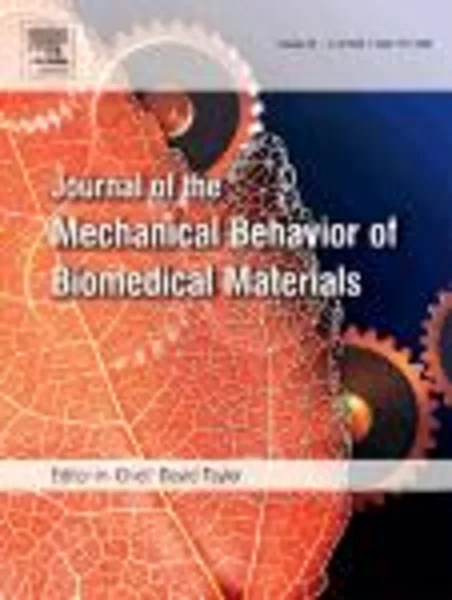-
the effect of poly (l-lactic acid) nanofiber orientation on osteogenic responses of human osteoblast-like mg63 cells
جزئیات بیشتر مقاله- تاریخ ارائه: 1394/01/01
- تاریخ انتشار در تی پی بین: 1394/01/01
- تعداد بازدید: 1285
- تعداد پرسش و پاسخ ها: 0
- شماره تماس دبیرخانه رویداد: -
in this study, poly (l-lactic acid) (plla)/trifluoroethanol (tfe) solution was electrospun to fabricate fibrous scaffolds with different fiber orientations. random and parallel plla nanofiber alignments were achieved by using a metal plate and a rolling rod as the receiver, respectively. the parallel plla fibrous scaffolds were further hot-stretched to obtain hyperparallel plla fibrous scaffolds. the plla fibrous scaffolds were characterized by fiber diameter, interfiber distance, fiber array angle, water contact angle, morphology and mechanical strength. the tensile strength of hyperparallel nano-fibers was approximately 5- and 14-times the parallel and random fibers, respectively. osteoblast-like mg63 cells were cultured on the plla scaffolds to study the effects of fiber orientation on cell morphology, proliferation and differentiation. the cells on the randomly-oriented scaffolds showed irregular forms, while the cells exhibited shuttle-like shapes on the parallel scaffolds and had larger aspect ratios along the fiber direction of the hyperparallel scaffolds. alkaline phosphatase (alp) activity and collagen i (placestatecol i) and osteocalcin (oc) deposition exhibited fiber orientation dependence. with an increase in parallelism of the fibers, there was a decrease in alp activity and placestatecol i and oc production. these results suggest that exploitation of plla fiber orientation may be used to control osteoblast-like cell responses.
مقالات جدیدترین رویدادها
-
استفاده از تحلیل اهمیت-عملکرد در ارائه الگوی مدیریت خلاقیت سازمانی و ارائه راهکار جهت بهبود
-
بررسی تاثیر ارزش وجوه نقد مازاد بر ساختار سرمایه شرکت های پذیرفته شده در بورس اوراق بهادار تهران
-
بررسی تأثیر سطح افشای ریسک بر قرارداد بدهی شرکت های پذیرفته شده در بورس اوراق بهادار تهران
-
بررسی تأثیر رتبه بندی اعتباری مبتنی بر مدل امتیاز بازار نوظهور بر نقد شوندگی سهام با تأکید بر خصوصی سازی شرکت ها
-
تأثیر آمیخته بازاریابی پوشاک ایرانی بر تصویر ذهنی مشتری پوشاک ایرانی (هاکوپیان)
-
بررسی تأثیر تجویز همزمان ویتامین c و وارفارین بر مسیرهای انعقادی خون موش صحرایی
-
تاثیر الیاف نایلون بر مقاومت فشاری و مدول الاستیسیته بتن خودتراکم و بررسی رابطه آنها
-
ارتباط سن با افزایش فشار نبض در اندام های فوقانی و تحتانی
-
بررسی عملکرد لرزه ای اتصالات تیر- ستون بتنی تقویت شده با ورق های فولادی
-
نقش سازمان آتش نشانی در مدیریت بحران ناشی از مخاطرات طبیعی سیل و آبگرفتگی (مورد مطالعه: خط شماره 4 متروی تهران)
مقالات جدیدترین ژورنال ها
-
مدیریت و بررسی افسردگی دانش آموزان دختر مقطع متوسطه دوم در دروان کرونا در شهرستان دزفول
-
مدیریت و بررسی خرد سیاسی در اندیشه ی فردوسی در ادب ایران
-
واکاوی و مدیریت توصیفی قلمدان(جاکلیدی)ضریح در موزه آستان قدس رضوی
-
بررسی تاثیر خلاقیت، دانش و انگیزه کارکنان بر پیشنهادات نوآورانه کارکنان ( مورد مطالعه: هتل های 3 و 4 ستاره استان کرمان)
-
بررسی تاثیر کیفیت سیستم های اطلاعاتی بر تصمیم گیری موفق در شرکتهای تولیدی استان اصفهان (مورد مطالعه: مدیران شرکتهای تولیدی استان اصفهان)
-
تلاش برای حفظ جایگاه هویت معماری همراه با توسعه شهرنشینی در معماری معاصر با تاکید بر آسمان خراش هامونگ چین
-
شناسایی و رتبه بندی موانع به کارگیری سیستم بهایابی بر td-abc در صنایع سنگ استان فارس
-
بهینه سازی فرآیند استخراج عصاره اتانولی برگ بادام به روش سطح پاسخ و بررسی اثر آنتی اکسیدانی آن
-
anions bioremediation potential of immobilized bacteria in tannery industrial effluents from kano state, nigeria
-
a computational estimation for alkyl chain effect in schiff base pyridinium fluoride ionic liquid on chemical reactivity, thermophysical properties, pharmacokinetics, and biological activity by dft approach




سوال خود را در مورد این مقاله مطرح نمایید :